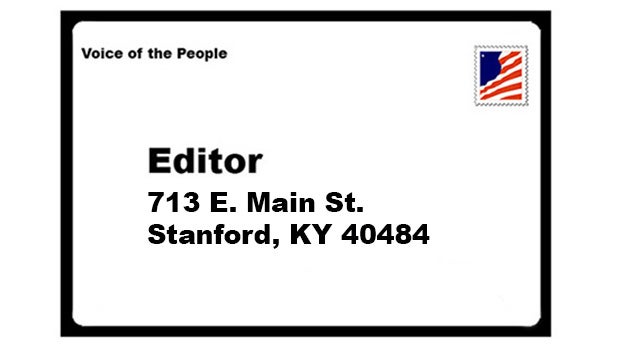‘Straightforward’ answers to common questions on nickel tax
Published 7:15 am Thursday, April 20, 2017
TAXES. It is hard to say the word without getting a bad taste in your mouth. We pay enough taxes. What could possibly be a good reason for paying more taxes?
In the near future, I will be asking members of the Lincoln County of Board of Education to approve a recallable nickel tax. While voting for an increase may not be popular, members realize our facilities are getting older and that we have no long range plan or funding mechanism to replace them. In order to finance new buildings, a nickel tax is necessary. Furthermore, we respect the opinions of each resident in our county and this is why I will be conducting a Town Hall meeting at each school in the district. Please take the time to read the following questions and answers. While I respect your opinion, it is the hope that you will see the need for a nickel tax.
Q. What is a “Recallable” Nickel?
A. The nickel tax is the one commitment required of Lincoln County citizens to obtain state assistance for the construction of two new elementary schools.
While the nickel tax only generates $532,918 annually, the state will provide an additional $793,004 per year as a match. This increases bonding (borrowing) potential from $3.2 million to $21.1 million.
Many school districts have already taken advantage of additional state money by passing a nickel tax. These districts have received millions from Kentucky’s building funds and have built modern facilities that provide their students the best environment in which to learn.
If we do not pass this tax, it will take 20 years to generate enough money to build just one elementary school and we are turning away $10.7 million in matching funds from the state.
Q. Why does Lincoln County need a Nickel Tax?
A. The goal of the board of education is to provide the best educational environment for students. Under our current budget constraints, the board would not be able to construct a new elementary school for another 20 years. With the Nickel Tax, the board will be able to construct two new elementary schools.
Q. Why does the Nickel Tax need to be passed now? Why not wait?
A. The longer we wait to pass the nickel the longer it takes to build the capacity to bond projects. Passing the nickel now would place district in position to construct two new elementary schools. There is also discussion at the state level that this could be the last year the state matches a Nickel Tax.
Q. What are the advantages to having the Nickel Tax?
A. The Nickel Tax more than quadruples the district’s ability to bond construction projects. Thus, we receive state matched dollars by contributing more locally.
Q. What will this do to individuals on fixed incomes?
A. This tax does not affect the Homestead Exemption Act.
Q. What will we build with the extra Nickel?
A. Currently, there is $72 million in unmet needs as outlined by our District Facilities Plan conducted in the spring of 2017. Discussions included the construction of two new elementary schools.
Q. Will this tax take away resources from the classroom?
A. The Nickel Tax is classified as “restricted” funds and cannot be used for anything but construction, debt service (bonding projects), or other projects as outlined on the District Facilities Plan. The Nickel Taxes do not affect our General Fund, which is where a majority of instructional components in the classroom are funded.
Q. What will happen if the “Recallable” Nickel is not passed?
A. Without this specific tax, no elementary school will be constructed for at least 20 years. We will continue to maintain our aging facilities in the most effective and efficient way possible with our limited resources. And by not passing the Nickel Tax, we are turning away $10.7 million in state matching funds.
Q. Where will the two new elementary schools be located?
A. The Local Planning Committee discussed building an elementary school on the west end of the county merging McKinney Elementary School and Hustonville Elementary School and another elementary school on the south end of the county merging Highland Elementary School and Waynesburg Elementary School.
Q. Why does the increase have to be five cents on property? Why can’t the School Board raise a lesser amount to start?
A. By statute, this is the only avenue the local board of education has to qualify for matching funds from the state legislature.
Q. Why should I support the Nickel Tax if I do not have children in school?
A. A report published in 2004 by the Knowledge Works Foundation titled Public Schools and Economic Development researches the impact of public schools on economic development. Their report contains the following:
Strong research detailing the impact of education on national economic growth and competitiveness: investing in the skill level of a nation’s population increases national productivity, and education leads to higher wages.
Emerging research on how public schools influence state and local economic growth and attract new business: schools educate the local labor force and can also increase an area’s quality of life in order to attract skilled workers to it.
Strong research on the impact of public schools on the real estate values of their surrounding communities: homes in high-performing school districts sell for more than homes in low-performing school districts.
Emerging research, with anecdotal evidence, on how public school facilities themselves impact economic development, particularly in distressed areas: school facilities that are small, local, and community-oriented can particularly affect local development.
The future doctors, lawyers, mechanics, computer technicians, welders, salespeople, business owners, farmers, plumbers, engineers, teachers and other leaders of this community will come from those who are educated in the Lincoln County Schools. As citizens and as business owners, we must invest in their success to ensure our own success and prosperity in the future.
Q. How much money will this nickel tax cost me every year?
A. The nickel tax is 5 cents per $100 assessed value on your home or land. The median home and land value in Lincoln County, Kentucky is $90,050, according to www.bestplaces.net, which means 50% of Lincoln Co home/landowners will pay less than $45 dollars a year. This breaks down to $3.73 per month or less than a meal at McDonalds.
Examples:
$50,000 valued home would be an additional $25.00 per year
$75,000 valued home would be an additional $37.50 per year.
$100,000 valued home would be an additional $50.00 per year.
***To calculate your exact additional tax, multiply your assessed value by .0005. ***
Q. How much does a new elementary school cost?
A. Current estimates put the cost somewhere between $10 million-$13 million.
Q. Why can’t we just build on to a particular school rather than build a new one?
A. The cost of a complete renovation for an elementary school is estimated between $6 million -$10 million. The cost of constructing a new school is estimated at $10 million-$13 million. Therefore, it is much more fiscally responsible to construct a new school. Even though Highland Elementary, Hustonville Elementary School, McKinney Elementary and Waynesburg Elementary Schools have been great schools in the past and has served their purpose well, they have been patched, repaired, and “piece-milled” together for the past 50 years. The technology infrastructure is old and outdated; along with many other issues.
Q. Why is this tax only for land/homeowners and not for everyone?
A. It is mandatory by state law (KRS 160.460 (3) and related KRS 132.010 and 133.125) that school taxes can only be increased through property taxes. This is the only way to secure funding for state assistance for construction funds. Is it as fair and equitable as other ways might be? Maybe or maybe not, but it is the only option we have.
Q. Why wasn’t this nickel tax put on the general ballot so everyone could vote for it?
A. The law states that we take the steps that are currently being taken. Each district within the county has an elected school board member who votes on their district’s behalf just as do your fiscal court magistrates, state representatives, and state senators.
Your school board representatives recognize and understand the need for the construction of new schools. If this initiative is blocked by petition, then it will be placed on the ballot.
Q. If this tax does not pass, can it be brought up again in a future attempt?
A. Yes, it may be brought up again but it would delay and potentially cost us the available state assistance for the construction of new schools.
Q. Why can’t the tax be for just those people who have school-aged children in the county?
A. The law does not allow for “picking and choosing” on who gets taxed (KRS 160.460 (3). It is a county wide property tax or no tax at all.
Q. Isn’t there any other way to raise the money for a new school besides a tax, such as “trimming the fat” from the school system?
A. All school districts across Kentucky have experienced major budget cuts over the past 10 years which has forced districts to seek out and reduce excess waste. While not perfect by any measure, the Lincoln County Schools has been very active and successful in finding ways to more efficiently utilize its revenue and resources. Since July 2016, $170,000 has been trimmed from administrator salaries at the Student Support Center. However, maintenance needs and costs have increased yearly as our buildings get older but the funds to renovate them have stayed nearly the same or dropped. Even if we were somehow able to cut out enough staff and educational programs to save $200,000 – $300,000 per year, this would not increase our bonding/borrowing capability and we would not have access to the $10 million – $13 million it will take to build a new school. The state simply will not help us in any way if the nickel tax is not passed. If the tax IS passed, the majority of the construction costs will be paid by the state, with an estimated $793,004 paid locally per year. However, with no state assistance, it would take many years (at least 45 years) to build two new elementary schools.
Q. How much money will this tax actually generate for the school district?
A. It will generate $532,918 per year. But that money will open the door for state assistance of $793,004) and a much greater bonding/borrowing capability (up to $21.1 million).
Q. Specifically, what can the money be spent on and what can it not be spent on?
A. The money can ONLY be spent on facility construction or renovation. Our Local Planning Committee had discussions of building two new elementary schools; something the students, faculty, and community deserve and can be proud of. The money set aside for new construction can only be spent for construction or repairs identified by the planning committee – not salaries of teachers, administrators, bus drivers, etc.
Q. How long will I have to pay this tax? Will it temporary or permanent?
A. The tax can be temporary or recalled but only after the bonding loans have been paid off (typically a 20- year bond). However, as with the other 100-plus districts in the state that have passed this tax, the tax is typically used even after the bonding loans have been paid, since other facilities within the district will be facing similar needs at that time. It is important to remember that this tax only be utilized for new construction or maintenance and renovations to the existing schools.
Q. When will the tax take effect?
A. The tax would take effect when tax bills are sent out. If the petition against the tax is successful, then the tax will be delayed which would potentially cost the district in the next funding cycle.
Q. What will happen to the old schools?
A. There are many community-friendly ideas that have been proposed. Some include: apartments for low income, nursing homes and community centers. However, the school board will make the final decision on what will happen with these facilities.
Q. If the school district gets this tax, what is to keep them from asking for and getting another nickel tax sometime in the future?
A. Historically, this school district has taken the stance that they will not pass any unneeded taxes. However, much like how today’s family could not maintain a home with income from 50 years ago, this district can no longer maintain our children’s school buildings with our current level of revenue. We are one of the lowest taxed districts in the state and this is the first time this local nickel tax has ever been requested. If this tax is passed, the funding will be there to help us to provide a safe and rich learning environment for our students.
Q. Who will build the new schools and how will they be selected?
A. The law requires new construction projects to solicit sealed, competitive bids. The ultimate goal is to have a winning contractor who is willing to sub-contract work to local businesses.
Q. I’ve heard rumors that, if the new elementary on the south end of the county is built, they will close Highland Elementary and Waynesburg Elementary and bring those kids to the new school on the south end. Is that going to happen?
A. The goal for a new elementary school on the south end includes the merger of Highland Elementary School and Waynesburg Elementary School. Attendance boundaries may be tweaked to ensure equitable numbers at all district elementary schools.
Q. I’ve heard rumors that, if the new elementary on the west end of the county is built, they will close McKinney Elementary School and Hustonville Elementary School and bring those kids to the new school on the west end. Is that going to happen?
A. The goal for a new elementary school on the west end includes the merger of McKinney Elementary School and Hustonville Elementary School. Attendance boundaries may be tweaked to ensure equitable numbers at all district elementary schools.
Q. I’ve heard that McKinney, Highland, Hustonville and Waynesburg Elementary Schools are not in as bad a shape as it is being reported. Is this true?
A. The district has made every effort over the years to try to fix the leaks, plumbing, lighting and electrical problems as well as many issues at these schools. Each of the above-mentioned schools are scheduled for major renovations within the next 10 years.






